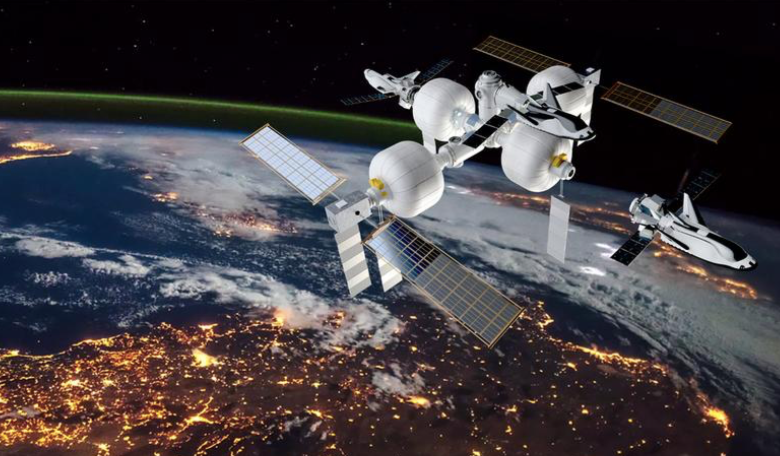The Sierra Nevada Corporation’s (SNC) large inflatable LIFE habitat module, designed initially to accommodate astronauts at NASA’s yet-to-be-built Moon-orbiting Gateway project, will be used to construct a full-blown space station, said the company at press conference Wednesday.
For the past few years, many reports have surfaced casting doubt on the longevity of the International Space Station (ISS).
The ageing off-world laboratory has been plagued with problems and funding beyond 2028 to continue its presence in space seems in short supply.
Replacements however, are already starting to pop up. China are planning to build their own space station starting this year and reports suggest that Russia might follow suit later down the line.
And, last year Axiom Space became the first commercial company to announce it would be constructing its own station in low Earth Orbit that will serve as a home to microgravity experiments, critical space-environment materials testing, and private and professional astronauts alike.
Now, with a space habitat module already under construction, and a spaceplane that is being developed to fly cargo to the International Space Station starting in 2022, SNC said it is going to deploy its own station before the ISS is decommissioned.
"We plan to launch our vehicles to a platform with inflatable modules where both uncrewed and crewed vehicles take people and cargo ... and then return safely to Earth," said Janet Kavandi, a former astronaut and an executive vice president of Sierra Nevada, during the press conference at company facilities in Littleton, Colorado.
SNC received funding from NASA in 2016 to develop a habitat concept and prototype along with five other prominent space industry heavyweights, under the agency’s public-private funding partnerships.
Its progress was showcased a couple of years ago when the company unveiled designs for a 300-cubic-meter living habitat called the Large Inflatable Fabric Environment, or LIFE for short.
SNC plan on using this same design but instead of a lone module, the station will comprise of multiple inflatable habitats the size of a three-story building, that will be connected by hardware.
When assembled the station will consist of sleeping quarters, a laboratory and an Astro Garden® system to provide fresh food within the habitat.
The LIFE habitat will undergo a NASA soft-goods certification this year and the full size ground prototype is in the process of being transferred to the Kennedy Space Center in Florida for further testing on short-and long-term habitation, the firm said in a statement.
The company’s reusable, multi-mission space utility vehicle, Dream Chaser, is key to the endeavour. As well as shuttling private astronauts to and from the outpost, it can serve as the only vehicle capable of rescuing astronauts from space destinations and returning them to Earth via a safe and speedy runway landing, SNC add.
“There is no scalable space travel industry without a spaceplane,” said SNC’s Chairwoman and owner Eren Ozmen. “Dream Chaser and its runway landing offer the scalable, preferred solution for humans and science in support of a vibrant LEO economy.”
The innovative space company did not disclose any figures surrounding the cost for building the outpost, but hinted that it would be a small fraction of the $100 billion plus spent on the International Space Station. It would also be more roomy said John Ross, Sierra Nevada's vice president of development.
“NASA has asked private industry to come to the table with alternatives to the International Space Station,” Kavandi said. “SNC intends to lead in LEO commercialisation, building on NASA’s efforts to date and welcoming additional public and private partners worldwide.”
These preliminary design reviews of potential orbiting stations have been requested by 2025, but "we believe that we could get up there much quicker,” Ross said.
"On a single launch, we could get all the elements that we need for an initial capability of six people in orbit. So that's incredible - to be able to do on a single launch," he added.











